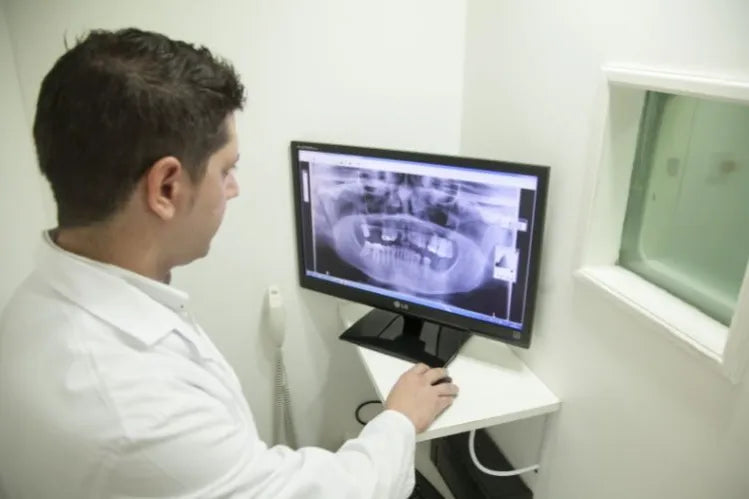
Evolution of Clear Aligners
Clear aligners, also known as invisible braces, have evolved significantly since their introduction in the late 1990s. Early iterations faced limitations regarding their effectiveness in addressing complex orthodontic issues. However, with advancements in technology, materials, and treatment planning, modern clear aligners have become a reliable solution for a wide range of dental misalignments.
The Customization Process
The success of clear aligner treatment lies in its highly personalized approach. No two individuals have identical dental structures, and each patient requires a unique treatment plan to address their specific orthodontic concerns. The customization process involves several steps:
Dental Impressions
The journey towards a tailored clear aligner treatment begins with the precise dental impression. During this stage, you’ll be required to send the molds of your dental arc to the provider using the provided at-home impression kit. In case, you choose to visit an orthodontist, the in-office examination may involve the use of X-rays, photographs, and digital scans to obtain a precise 3D model of the patient's teeth and jaw.
Digital Treatment Planning
Advanced 3D scanning and imaging technologies are used to create a digital model of a patient's teeth and bite. This digital model allows orthodontists to analyze the existing misalignments, plan the necessary tooth movements, and design a customized treatment approach to achieve the desired results effectively.
Individualized Aligner Fabrication
Using the digital treatment plan as a guide, custom aligners are fabricated for the patient. Each aligner is designed to exert specific forces on the teeth, gradually guiding them towards their ideal positions. The aligners are typically made of clear, BPA-free plastic, making them both comfortable and inconspicuous.
Monitoring Progress
Throughout the treatment, patients are required to visit their orthodontist or attend remote consultation sessions periodically to ensure that the treatment is progressing as planned. These check-up appointments allow the dental professional to monitor the patient's progress, make any necessary adjustments to the treatment plan, and provide guidance on wearing the aligners correctly.
Refinements
In some cases, refinements may be necessary to achieve the desired results fully. Refinements involve creating additional sets of aligners that target specific tooth movements that were not fully accomplished in the initial treatment. This fine-tuning ensures that the patient achieves the best possible outcome.
Benefits of Customized Treatment Plans
The customization of clear aligner treatment plans offers several significant advantages over traditional braces and even generic clear aligner systems:
Precise and Targeted Tooth Movement
Customized treatment plans use digital technology to map out the entire process in advance. This allows for more accurate and targeted tooth movement, reducing the risk of unintended side effects and ensuring a better end result.
Comfort and Convenience
The individualized design of clear aligners ensures a snug fit and maximum comfort during wear. The absence of metal brackets and wires eliminates the risk of mouth abrasions, and the ability to remove the aligners when eating or brushing simplifies oral hygiene routines.
Discreet Appearance
One of the primary reasons individuals opt for clear aligners is their near-invisible appearance. Customized aligners are tailored to fit precisely over the patient's teeth, making them virtually undetectable to others.
Shorter Treatment Duration
In some cases, customized clear aligner treatment plans may lead to shorter overall treatment durations compared to traditional braces. The digital planning process optimizes tooth movement, potentially reducing the time required for the desired alignment.
Predictable Results
The use of advanced digital technology enhances the predictability of clear aligner treatment outcomes. Patients can have a clearer understanding of the treatment process and the expected results from the outset.
Conclusion
As technology continues to advance and research expands, clear aligners will likely become even more tailored to the unique needs of every patient, further solidifying their place as a leading orthodontic solution. So, whether you're a teenager seeking a discreet option or an adult looking for a comfortable and effective way to improve your smile, clear aligners may be the ideal choice for a truly customized orthodontic journey.
FAQs
The duration of treatment varies depending on the complexity of the case. On average, treatment can take anywhere from 6 to 18 months.
Clear aligners may cause mild discomfort or pressure when first worn or when transitioning to a new aligner. However, this is usually temporary and signifies the aligners are working.
After completing the treatment, you will likely be provided with retainers to maintain the newly achieved alignment and prevent teeth from shifting back.


 Australia
Australia New Zealand
New Zealand Malaysia
Malaysia English
English Portuguese
Portuguese English
English English
English English
English English
English English
English Canada
Canada